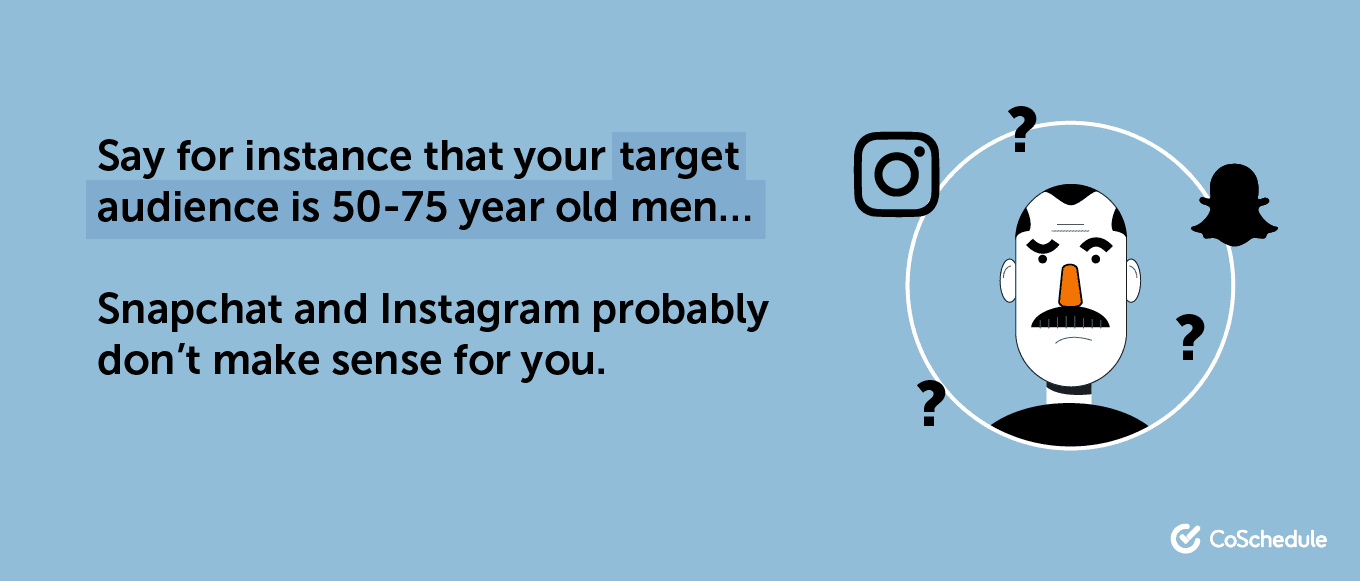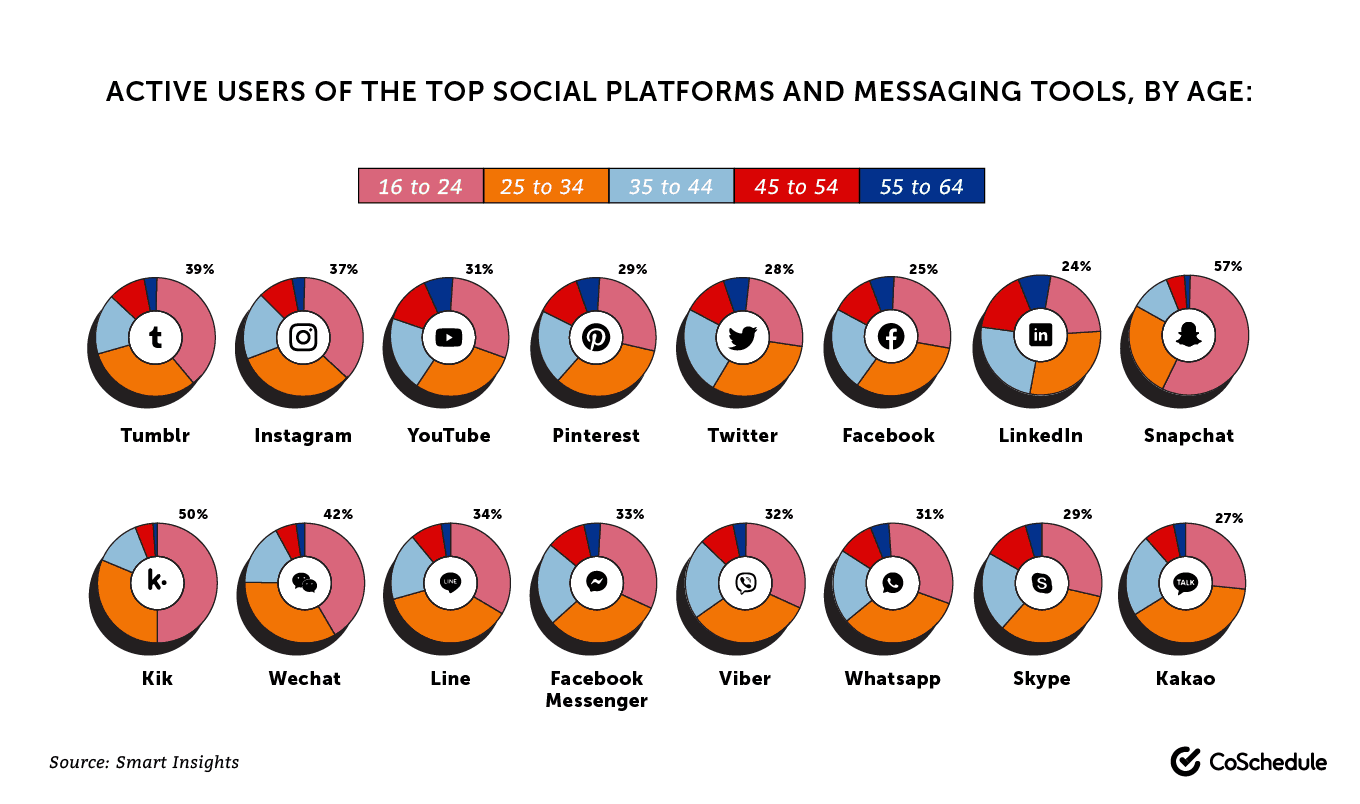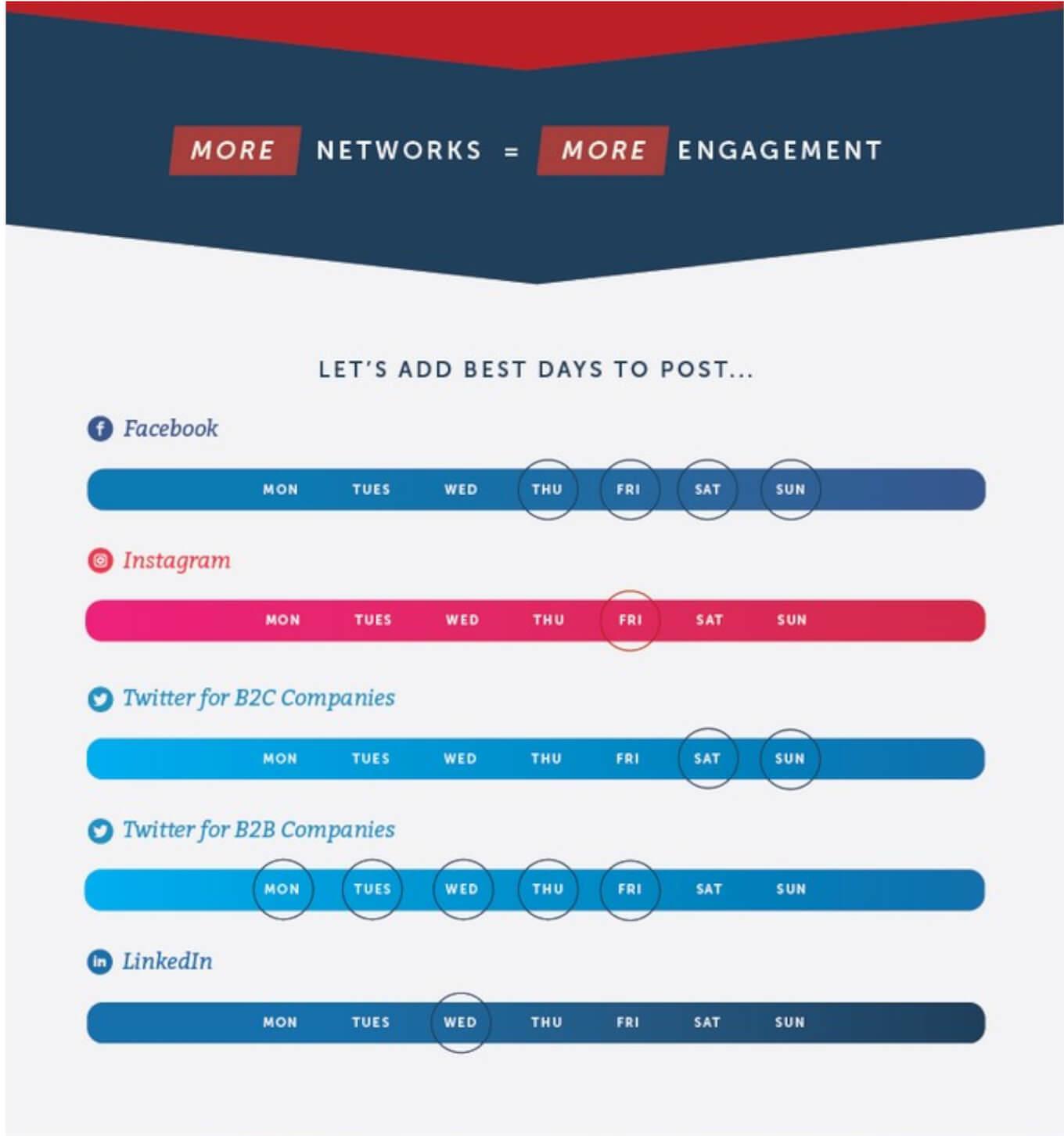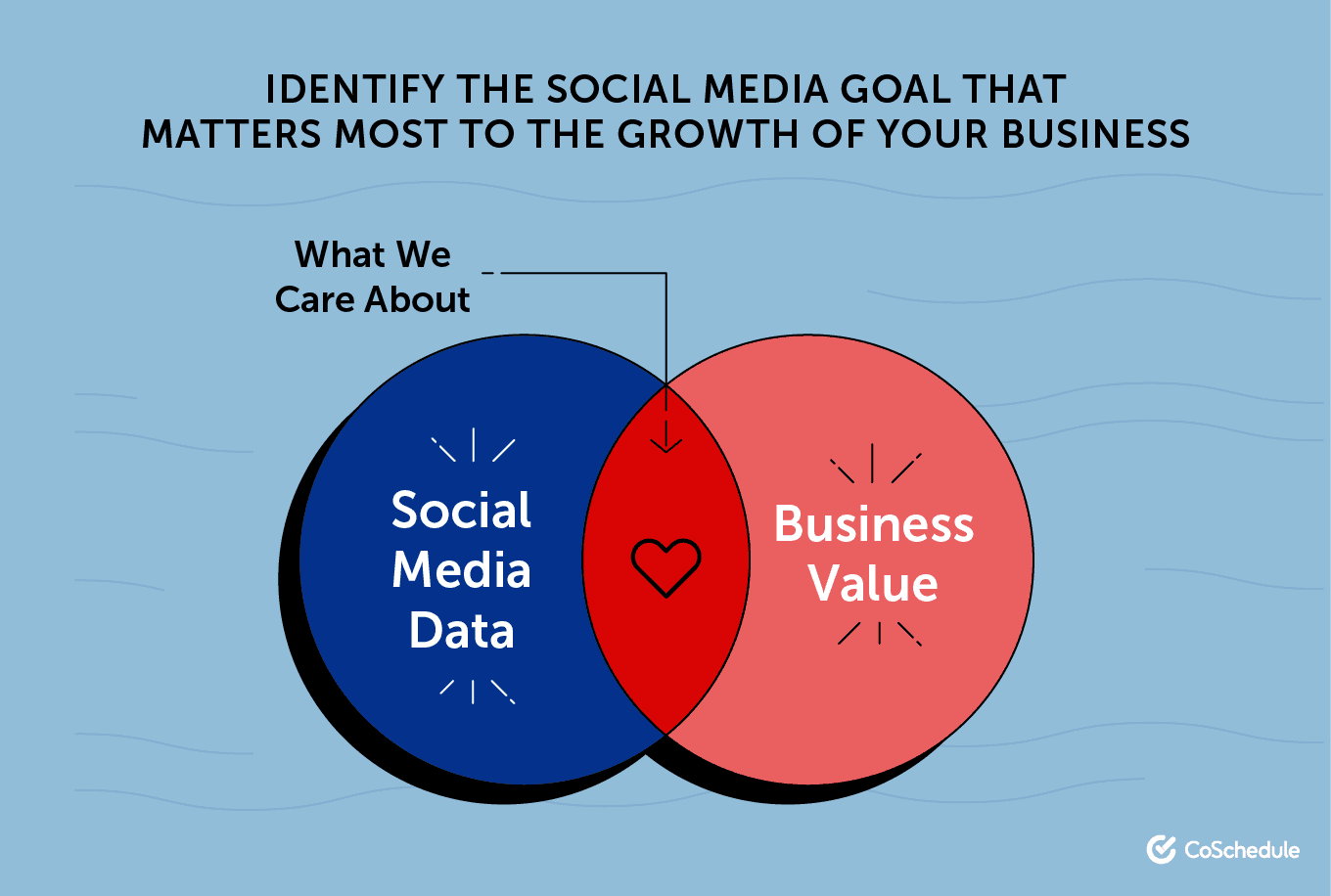Social Media for Nonprofits: Your Guide to Getting Started the Right Way
 Running a nonprofit is tough – between general business operations and amplifying your mission, there never seems to be enough time in the day.
Your organization needs to be efficient in their use of time and marketing efforts.
You need a way to maximize your brand awareness that doesn’t require an enormous amount of resources.
That’s where social media comes in – whether you’re already using Facebook or are curious about how Instagram can help your nonprofit grow, you’ve come to the right place.
You’ll learn how to set up social media strategies for nonprofits, as well as some social media best practices for nonprofits.
Finally, you’ll learn how to use social media to boost awareness of your organization’s mission.
Running a nonprofit is tough – between general business operations and amplifying your mission, there never seems to be enough time in the day.
Your organization needs to be efficient in their use of time and marketing efforts.
You need a way to maximize your brand awareness that doesn’t require an enormous amount of resources.
That’s where social media comes in – whether you’re already using Facebook or are curious about how Instagram can help your nonprofit grow, you’ve come to the right place.
You’ll learn how to set up social media strategies for nonprofits, as well as some social media best practices for nonprofits.
Finally, you’ll learn how to use social media to boost awareness of your organization’s mission.
Social Media for Nonprofits: Your Guide to Getting Started the Right Way by @JuliaEMcCoy for @CoSchedule
Click To TweetOrganize Every Post for Your Nonprofit With This Social Media Calendar Template
Do you have a lot of content to share, but not much budget to spare? Then download this easy-to-use social media calendar template to plan and organize all your posts in advance, so you won't be left wondering what to share, and when:Your Guide to Social Media for Nonprofits: Table of Contents
Why Social Media for Nonprofits is Important to Your Business
Social Media Strategies for Nonprofits
Social Media Best Practices for Nonprofits
Why Social Media for Nonprofits is Important to Your Business
Before diving into the strategies and best practices for nonprofits, it’s important to understand why social media is important to nonprofits. Consider these social media statistics:- Over 50% of social media users will research products and services through various social media platforms.
- When it comes to social media engagement, 83% of Twitter users who received company responses to their Tweets had more positive feelings about the brand and were more inclined to do work with them in the future.
- Nearly 40% of consumers find purchase inspiration through different social media platforms.
Social Media Strategies for Nonprofits
Before you start optimizing social media strategies for nonprofits, it’s prudent that you have a plan in place to make the best use of your social media marketing efforts.1. Establish Your Company’s Goals
Hopefully, you’ve already spent some time on this and know the general goals for your nonprofit. However, you need to have these nailed down to make the most of your social media strategy. Here are some questions to ask as you craft your goals:- Why do people care about the issue you’re trying to address?
- What do you do differently that sets you apart from other nonprofits?
- Who is most likely to be moved by your goals?
2. Understand Your Audience
Knowing who you serve, what they care about, and what actions you want them to take is a critical part of social media success. Think about how your audience demographics stack up:- What is the general age range for your audience?
- Do you serve a local audience, or do you have a broad reach?
- Why does your audience care about your nonprofit specifically?
 3. Assemble Your Social Media Toolkit
3. Assemble Your Social Media Toolkit
Using social media tools is one of the best ways to make your social media strategy more efficient. Most tools can be set up easily and once they’re set up, they save you an enormous amount of time.
Some popular tools that can boost your social media strategy are:
- Canva – For nonprofits that don’t have a designer on staff, Canva offers a low-cost option for creating your own infographic, logos, banners, and more.
- Venngage – Another free to low-cost option exclusively for creating infographics is Venngage.
- CoSchedule’s Growth Plan – If you’re looking for a comprehensive marketing package that includes social media management, consider CoSchedule’s growth plan.
4. Select Your Channels
Once you’ve figured out who your target audience is, you can start focusing on which social media channels will work best for your nonprofit. Here are the most popular social media channels for nonprofit marketing: Source: https://www.smartinsights.com/social-media-marketing/social-media-strategy/new-global-social-media-research/
Source: https://www.smartinsights.com/social-media-marketing/social-media-strategy/new-global-social-media-research/
5. Set Your Social Media Goals You already have goals in place for your organization, but what about the goals you set for your social media strategy? Consider these potential marketing goals:
- Boost donations to your nonprofit
- Drive traffic to your nonprofit’s website
- Bring awareness to a seasonal cause or promotion
- Increase your social media presence
1. Create Your Basic Content Strategy
If you haven’t already considered this, the first thing you want to do before you start putting together social media campaigns is to create your brand’s voice and tone. Do you want to sound professional and composed? Would you rather sound warm and open? Your voice and tone set the stage for how you’ll create your content strategy. You’ll also want to consider the types of content you want to share across different social media platforms:- Links to content you created or outside sources
- GIFs, photos, or graphics that have been created for your post
- Videos that talk about your mission and goals
2. Set a Basic Posting Schedule
Rather than haphazardly posting to your social media channels as time permits, you need to set up a posting schedule for the best campaign results. Think about each platform individually – social media best practices vary across platforms. Posting too infrequently means you’ll miss opportunities for exposure. Some social media best practices for nonprofits figuring out their posting schedule are:- How often you post: Studies suggest that posting once daily on Facebook is best but posting 15 times daily on Twitter has the most impact. Instagram and Pinterest vary, as well.
- What time you post: This varies widely, but B2C businesses that post on Instagram have the most success at 8 AM, 1 PM, and 9 PM.
- What day you post: Depending on the social media channels you’re using Wednesday may be the best day. For other channels, it may be Friday.
 Source: CoSchedule
One thing to keep in mind is that this may vary for your nonprofit – make sure you’re tracking your social media campaign results to maximize your efficiency.
Source: CoSchedule
One thing to keep in mind is that this may vary for your nonprofit – make sure you’re tracking your social media campaign results to maximize your efficiency.
3. Plan and Organize Posts on a Calendar
Once you’ve spent some time figuring out your posting schedule, you’ll have the best results if you plan and organize your posts on a calendar. A web-based calendar is the best, but feel free to make notes on a desk calendar if it helps. Planning everything on a calendar helps ensure that you don’t miss any opportunities. There are a couple of ways to manage your social media calendar:- Calendar templates: If you’re going to manage your social media strategy yourself, you’ll need to use calendar post templates to schedule your social media posts. This can be a little time consuming, so keep that in mind.
- Social media apps: For a more efficient social media management strategy, consider using CoSchedule’s marketing suite. Their Growth Plan offers a comprehensive suite of tools for $250/month – that includes their social media management tools.
4. Measure Results
The last of the, if not the most important, social media best practices for nonprofits is to measure your social media campaign results. If you don’t measure your results, you won’t know if your campaigns are performing. A non-performing campaign is a waste of your time and money, so don’t skip this step. Here are some important things to measure about your social media campaigns:- How many people viewed your post and how many engaged with it?
- Did your post drive traffic to your website or a landing page?
- What are the demographics of the people who engaged with your post?
How to Use Social Media for Nonprofits to Boost Awareness
While it can seem a little overwhelming at first, social media for nonprofits is an excellent tool for promoting your brand and bringing awareness to your organization’s mission and goals. This is what you need to know about using social media for nonprofits to boost brand awareness:- Choose social media platforms that are frequented by your audience – this will ensure you’re reaching the right people.
- Use social media management tools to save time – you have other marketing efforts to focus on, so don’t spend all of your time managing various social media channels.
- Measure your results to create better campaigns – don’t keep doing the same thing if it isn’t working for your organization.



